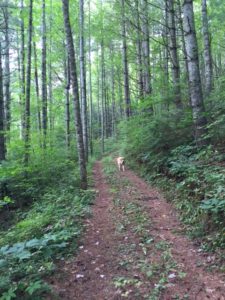

A Lesson on Aging
I’m so happy to be back in the mountains. I love the weather, the trees, the birds, the rushing creek, the flowering bushes. The beauty.


I’m so happy to be back in the mountains. I love the weather, the trees, the birds, the rushing creek, the flowering bushes. The beauty.

Hello friends. Yes, I’m very alive and well. And having some fascinating dreams. I hope you are too. For the last few months I’ve been

“The gigantic catastrophes that threaten us today are not elemental happenings of a physical or biological order, but psychic events. To a quite terrifying degree
Website design and development by Chad Lieberman
12 Responses
The caryatids
an extreme cultural expression
women holding up the roof
chained in place by lintels and cornices
women held down by the weight of the sky
some strident claiming their place in the world
fist firm head lifted
others shouldering the weight
like the ten thousand water jars
carried to supply their homes, fields, families
with the female essence
the ocean of life
other statuesque women near falling
crumbling crumpling under the mass of
expectation weighing down their future
knowing that a stiff upper
back cannot carry original sin
with pride but guilt or sorrow or rebellion
and so taking on first woman’s guilt
to absolve her just as women share stories
griefs and burdens helping each other
weave the cloth to decorate and cover
leaving those folds and curves of limestone and
marble woven by their mothers to bear the weight
What do we expect of those women
who hold up the halls of the gods?
Are those women to welcome the stranger
with granite digits and open staring pupils
Are those caryatids who hold up the sky
expressions of our true hopes and aspirations
of women holding up the sky
like our grandmothers did
so we can play within their safety
and under their care
A poem I wrote last year
Oh, how lovely! Thank you for sharing this here, Andrew. I know my readers will love it.
It’s especially comforting and encouraging to me that it’s written by a man. At a time when the shadow side of masculinity is being held up to intense scrutiny, we need to remember that everyone has a shadow, but not every male has a misogynistic shadow any more than every woman hates men! 🙂
Wow! Caryatids hold such colossal strength and beauty don’t they! For me they embody the Divine Feminine, forever immortalised and set in stone and yet … the stone doesn’t seem to stay “stone” for very long as it metamorphoses into “skin” before my eyes. Both archetypal and architectural these ancient, inspiring and deeply moving works of art are sublime! What stories they could tell this poet is pondering …
For as each “woman” faces out, standing alone, carrying the weight of the world, I sense that many women will recognise not only their stance but also the strength and potency of what it feels like when a line of women (much like the Caryatids or Atwood’s Handmaids) stand together. Yes, there’s a strong link between Caryatids and the ancient “Queen” archetype … personally, they’re such a fitting image with the #MeToo movement for me.
Oh, I really enjoyed reading this one Jeanie! Thank you for sharing. It’s got me thinking about the four Queens of the Tarot which I’ll explore later today. Looking forward (even more!) to the publication of your new book, The Soul’s Twins. Oh, and Andrew’s Caryatids poem (above) adds to the depth and richness of your article, look forward to reading more replies in the coming days. Warm autumnal blessings, Deborah.
Yes, I see the Divine Feminine when I look at Caryatids too. I think of the Divine Feminine as being manifest in all the feminine archetypes, but perhaps the Queen most of all, because for me she’s the most community-minded. And yes, absolutely relevant to the #MeToo movement and women standing together!!
I love it that you and I are fluent in the same language as we discuss this mystery of the Divine Feminine. She is so utterly relevant to the developing conditions in our world, but I don’t think many people really understand how she represents the inner, archetypal energies in all of us which create these conditions and influence social change.
I do talk about this in my book. I can’t wait for you to read it and look forward to your response. Unfortunately, its publication is still months away!
Thank you for your always rich and poetic contributions to my blog, Deborah. Your passion is catching!
Jeanie
Publication months away gives you time to step out of the writer’s cave into the world of book promotion, giving talks, writing blogs, and all the rest. I know you’ll use those months well.
Archetype and Architecture somehow seem to belong together – both showing strength and soundness, groundedness and beauty. Thank you Jeannie this is truly lovely. I felt a melting of my heart as I read this and an expansion of blood vessels in my wrists strangely enough which for me is always an indication that I’ve been touched in an essential way. I guess I recognised the strength of the feminine archetype so vital for all of us, men and women.
Andrew’s poem is extraordinary, thank you to him.
Amandla! Awethu! An Nguni (African) saying that means Power! Power is in your hands! You can imagine it as a rallying cry often used here in SA.
Thank you, Susan. I like your analogy between archetype and architecture! Both are fundamental patterned structures—the former psychological, the latter physical—that contain enormous strength and potential for supporting human endeavors.
How interesting. I’ve never heard of feeling an expansion of the blood vessels in the wrists. That takes a lot of mindfulness. I also have a physical symptom that alerts me to being deeply touched in an essential way that I associate with spirituality: love, gratitude, compassion, awe…..etc. It’s a wave of chills that begins somewhere deep in my throat near the top of my spine and sends shivers throughout my body, sometimes causing involuntary spasms. I wonder how many other people receive messages like these from their bodies that makes them aware of being in a deeply soulful, perhaps sacred, place……
What a great saying about power! Yes, we all have it in our archetypes and in our hands. It’s up to us to develop and use it for the betterment of all!
Thanks Jeanie for saying about your physical response to a psychic event. That’s quite something! Just by the by, I’m reading your response at about 6.45 pm and you sent yours at 11.11 am … 🙂
A powerful symbol and powerful post. Thank you, Jeanie. When I think of carotids and the few we find in the United States, I think of the Statue of Liberty and what she stood for once. May she stand for those Queenly values again.
I loved other comments–Andrew’s poem, Deborah’s Tarot, Susan’s architecture and embodiment.
Looking at these statues lengthens my spine and raises my chin and brings tears to my eyes. A sense of deep relief and protection that allows me to breathe deeply. Ah, She is Here.
Somehow I hadn’t made the caryatid/statue of Liberty connection! But, of course! She certain did stand for the strong feminine values the caryatid represents. Although holding up that torch feels more masculine to me….you know, spiritual and upwardly striving, with the votive tablet in her left hand. I just read that she represents the Roman goddess, Libertas, goddess of, you guessed it, freedom and liberty!
Another thought, the caryatids carried and supported heavy burdens and were held down by the weight of the sky, as Andrew puts it in his poem, but Lady Liberty is free from any kind of oppression or domination. There’s a broken chain at her feet and her light rises into the sky. In a way, she symbolizes a balanced blend between masculinity and femininity….. A hopeful and prescient vision of what the U.S. had, and still has the potential to become!
Hmmm. I like that. Thank you for your thoughts that brought this insight.
Just a thought … every since I came across the myths and stories of the Goddess Hekate, the Great Mother whenever I see your Statue of Liberty I think of her immediately … with one of her flaming torches casting light into the world! Loving all your rich replies Jeanie! x
Oh my! I hadn’t thought of Hekate in reference to the Statue of Liberty either. And yet I have just such an image of her in my picture file making the same exact gesture. Oh dear. I must be losing it…. Thanks to you and Elaine for helping me see these connections. 🙂